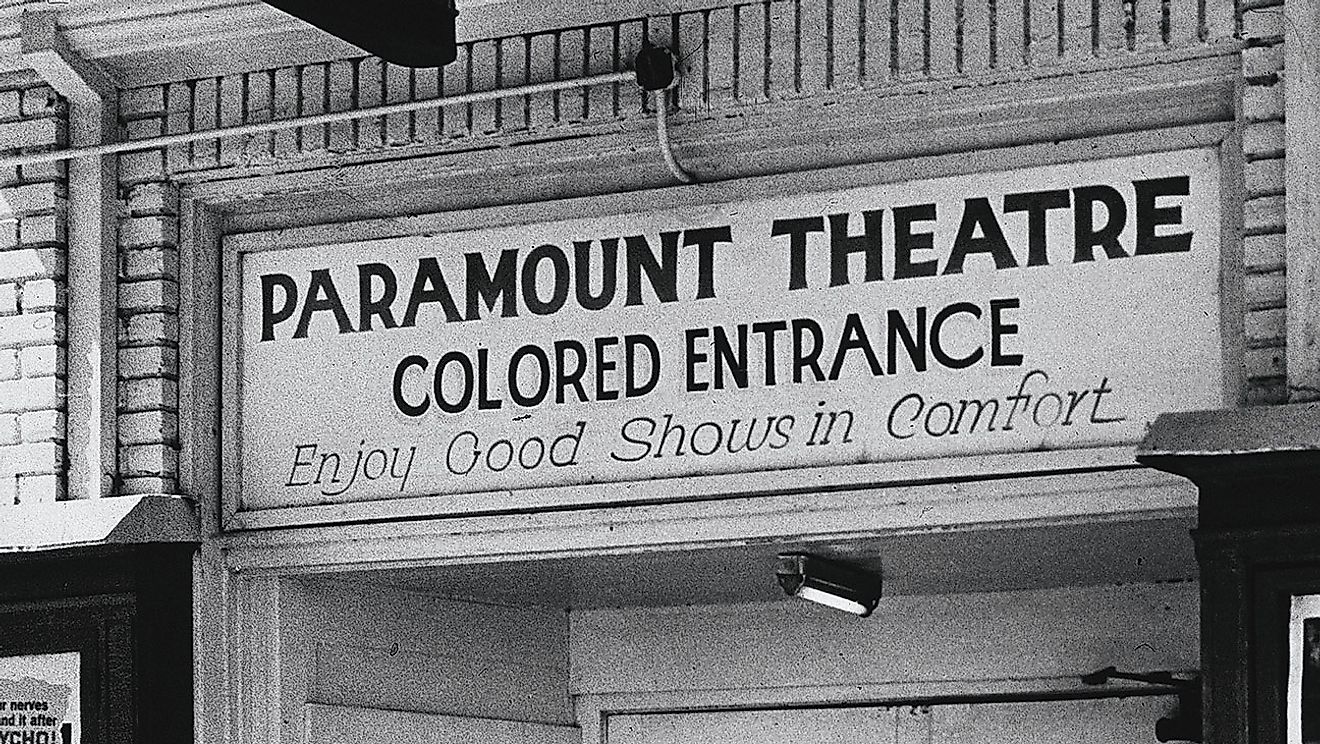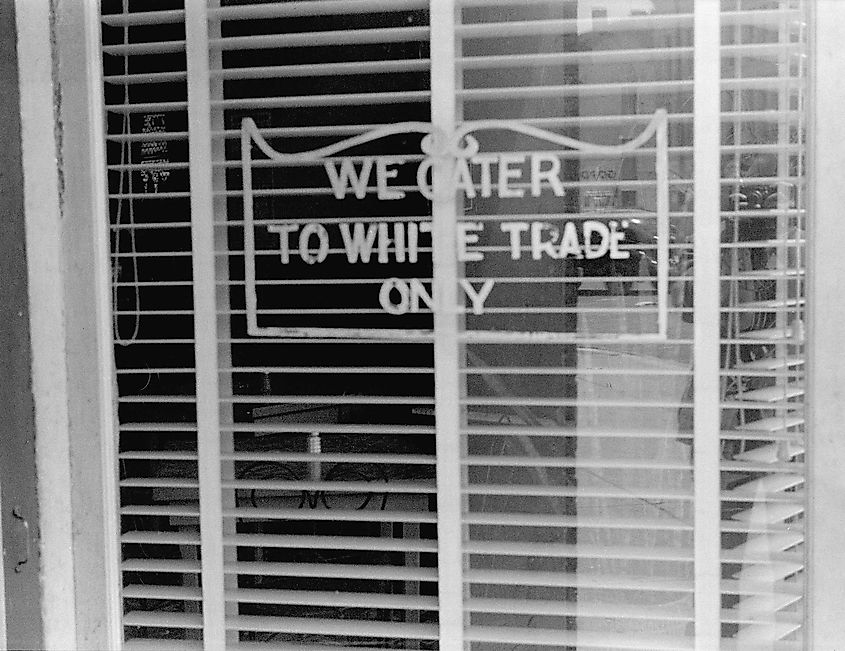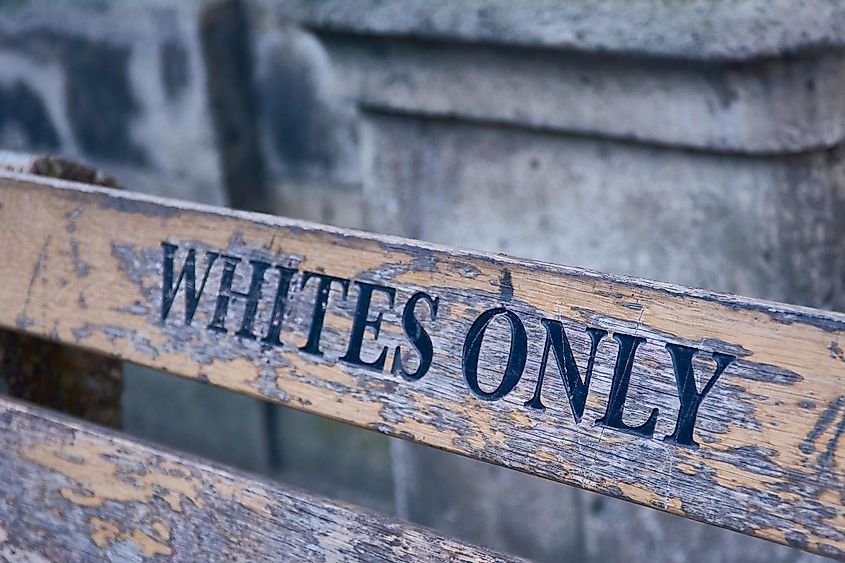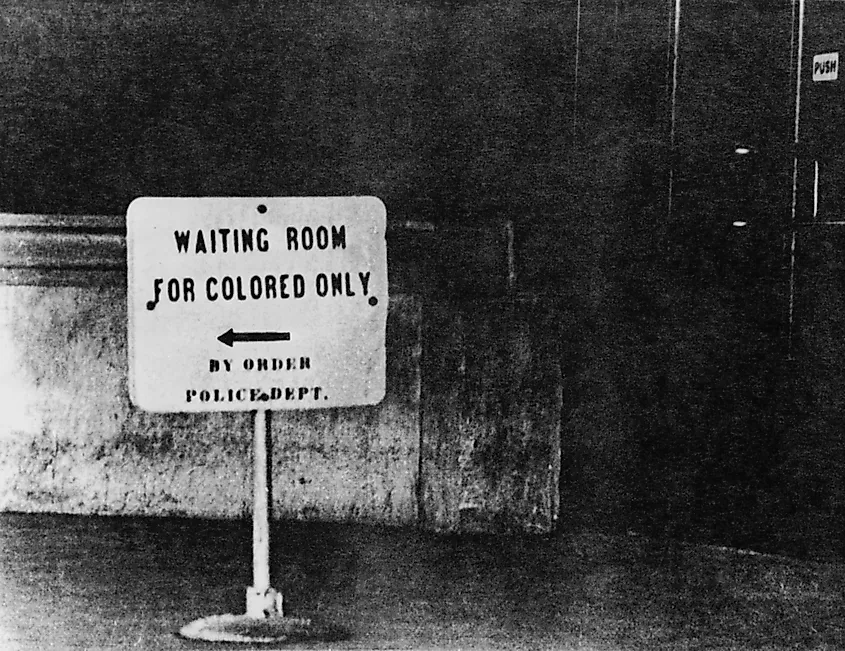What Is De Jure Segregation? Explanation and Examples

- The phrase “de jure” is a legal term, defined as a state of affairs that complies with certain laws.
- De facto laws are states of affairs that are not formally sanctioned by a government or business.
- Once the 13th amendment was passed, segregation laws - known as Jim Crow - were enacted to keep Black and White people separated in public.
- Plessy v. Ferguson’s ruling remained in place until 1954, in the Brown v. Board of Education of Topeka case.
- Students of other minority groups and those living in poverty are subject to de facto segregation.
The phrase “de jure” is a legal term, defined as a state of affairs that complies with certain laws. De jure indicates that certain regulations have been sanctioned by a government or business entity, and can apply to different situations.
Segregation can be broadly defined as separation, but it is historically associated with laws set in place to separate Black and White people in public, and from receiving equal treatment. The “Jim Crow” laws that were in place from the 1880s until 1964 are the most familiar example of de jure segregation, but there are other instances of legal, enforced separation throughout history. De jure segregation laws have also applied to separation based on age and gender.
De Jure vs. De Facto

De facto is also a legal term that is related to de jure, although there is a clear distinction. De facto laws are states of affairs that are not formally sanctioned by a government or business. They are situations that exist without laws that regulate them.
One example of a de facto state of affairs could be an all-white neighborhood with few or little minorities living there. If a few minority families moved in and the white families all moved out, this neighborhood could be considered as de facto segregation before or after the moves. Another example might be an organized social group was only open to members of a particular religion.
Types of De Jure Segregation
The Age Discrimination in Employment Act of 1967 (ADEA) protects employees and job applicants from certain types of age discrimination. Those over 40 cannot be discriminated against in terms, privileges or conditions of employment, such as hiring, firing, compensation, or promotions. This was supplemented by The Age Discrimination Act of 1975, which prohibits age-based discrimination for programs that receive federal financial assistance. The ADEA does permit state and local governments to specify minimum retirement ages and mandatory maximum hiring ages in some sectors, including law enforcement jobs, commercial pilots, and state and local judges.
De Jure Gender Segregation is used by necessity in many settings, and has been challenged in others. Separate accommodations are seen in public restrooms, locker rooms, and prisons; hospitals may only hire female nurses to attend to female patients in some cases. Also, the Transportation Security Administration requires that only female officers perform body searches on female passengers. The Military Selective Service Act of 1948 only permitted young men to register for the draft. In 2019, a Texas federal judge ruled that this Act violated the 14th Amendment to the U.S. Constitution. Women now serve in combat roles.
Jim Crow Laws

Slavery was abolished in the United States on December 18, 1865, when the 13th amendment to the U.S. Constitution was adopted. This ensured that slavery and involuntary servitude would no longer exist in America. Once the 13thamendment was passed, segregation laws - known as Jim Crow - were enacted to keep Black and White people separated in public.
Starting in the late 1870s, Southern state legislatures began passing laws that required the separation of “persons of color” from whites in schools and public transportation. This segregation was extended to restaurants, theatres, bathrooms, and parks. The Civil Rights Act of 1875 prohibited racial discrimination in public facilities, but Jim Crow laws were still the custom in the South. Then in 1883, the U.S. Supreme Court declared the Act unconstitutional, claiming that the Act unfairly regulated private companies.
This 1883 ruling allowed White southerners to strengthen segregation laws. From 1887 to 1892, these states refused African-Americans equal access to public transportation and accommodations:
- Alabama
- Arkansas
- Florida
- Georgia
- Louisiana
- Mississippi
- Maryland
- North Carolina
- Kentucky
- Tennessee
- Virginia
Blacks had to sit in separate sections at theatres, separate train cars, and at the back of buses. These de jure segregation laws also applied to hospitals and cemeteries.
Jim Crow was further cemented by the landmark Plessy v. Ferguson of 1896. This perpetuated the “separate but equal” laws, which prohibited states from refusing “equal protection of the laws” to anyone in their jurisdictions. However, the decision also provided constitutional sanctions for laws that allowed for separate public services and facilities for Blacks and Whites. In essence, Plessy v. Ferguson case’s ruling sanctioned racial segregation by the federal government.
The Northern States
Although northern states, including Indiana, Massachusetts, Michigan, Nebraska, New York, Ohio, Pennsylvania, and Rhode Island, had laws in place that made this kind of racial discrimination illegal, Blacks still faced segregation here. Still, it was de facto, not de jure. Blacks and Whites lived in separate neighborhoods, and though much was due to prejudice, there were other factors in play. Like other minorities, Blacks often did this by choice, preferring to live with people of similar ethnic backgrounds. Low incomes also affected which areas people chose to live in. There were also judicially-enforced racial covenants to keep Blacks out of certain neighborhoods, municipal ordinances, and realtors/landlords who would not sell or rent to minorities.
Brown v. Board of Education of Topeka
Plessy v. Ferguson’s ruling remained in place until 1954 in the Brown v. Board of Education of Topeka case. A plaintiff, Oliver Brown, filed a class-action lawsuit against the Topeka, Kansas Board of Education after his daughter was barred from entering the city’s all-white elementary schools. Brown’s case asserted that the schools provided for Black children were not equal to the White schools. He also claimed that segregation was in violation of the 14th Amendment’s “equal protection clause.”
Brown’s case was combined with four other related school segregation cases and arrived at the Supreme Court in 1952. The decision came on May 17, 1954: The Court ruled that the plaintiffs had been “deprived of the equal protection of the laws guaranteed by the 14th Amendment.”
The Legacy of Slavery and Segregation

The efforts to overcome the legacy of slavery is an ongoing issue, and de facto segregation is still present in society. The Economic Policy Institute pointed out that though segregation is unconstitutional, schools are still divided by race and ethnicity. According to their data, “Black students are more likely than white students to attend high-poverty schools.” This leads to economic status segregation, lower test scores, less opportunity, wider performance gaps, and less opportunity.
Students of other minority groups and those living in poverty are also subject to this kind of de facto segregation. Another study showed that more than 50 percent of U.S. school students live in districts that are “racially concentrated.” This means that the district has at least 75 percent of White students or at least 75 percent of non-White students. It has been more than 50 years since Brown v. Board of Education of Topeka, and although de jure segregation laws for school segregation were abolished, their legacy may linger on until there are equal opportunities for all.











